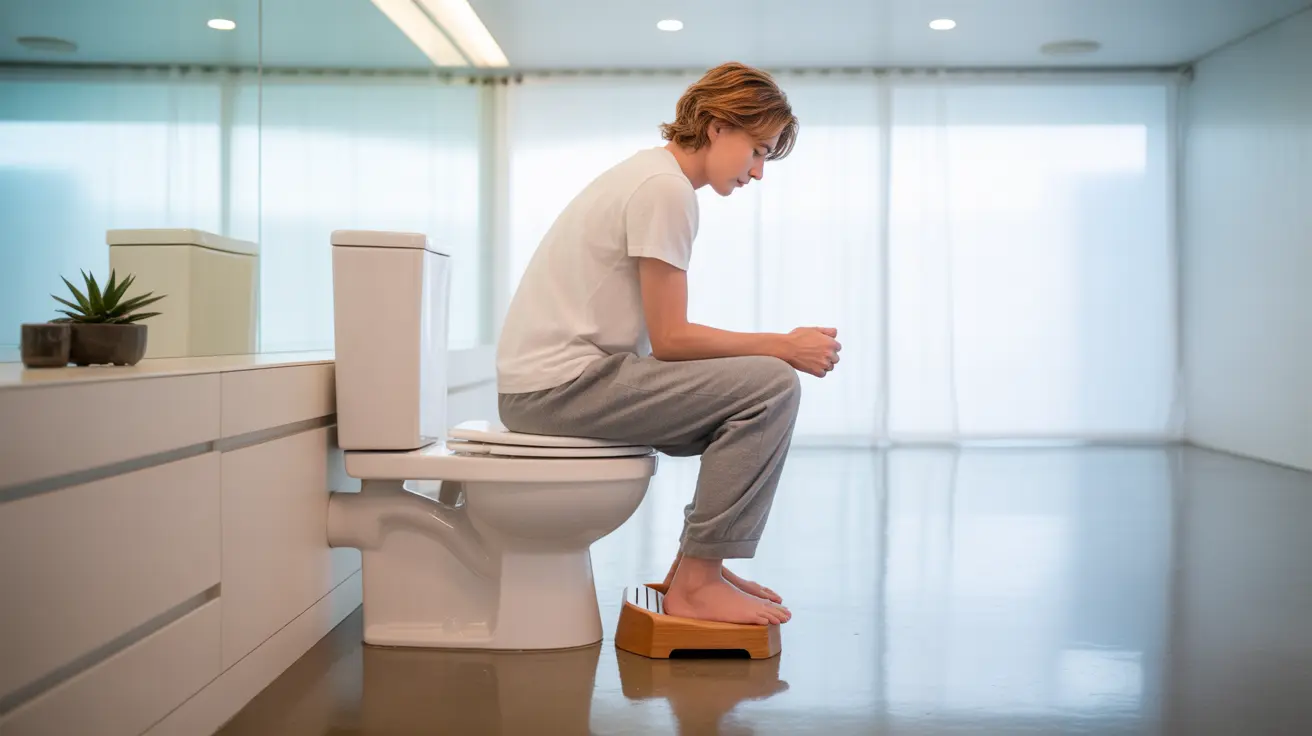If you've ever struggled with uncomfortable or difficult bowel movements, you may have heard about the Squatty Potty. This popular bathroom accessory claims to improve bowel movement efficiency by promoting a more natural posture during elimination. But does the Squatty Potty really work as advertised? Let's explore the science behind this toilet footstool and examine its effectiveness.
How the Squatty Potty Works
The Squatty Potty is designed to elevate your feet while sitting on the toilet, creating a squatting position that reportedly aligns the colon more effectively for easier bowel movements. This position helps straighten the rectoanal canal, potentially reducing straining and making elimination more comfortable and efficient.
The Science Behind Squatting
Research suggests that squatting during bowel movements can create a more optimal angle for the puborectalis muscle to relax, allowing for smoother passage of stool. When sitting normally on a toilet, this muscle maintains a slight kink in the rectum, which can make elimination more difficult. The elevated foot position provided by the Squatty Potty helps reduce this natural kink.
Benefits of Using a Squatty Potty
Many users report several advantages when incorporating the Squatty Potty into their bathroom routine:
- Reduced straining during bowel movements
- Faster, more complete elimination
- Better support for people with constipation
- Potential reduction in bloating and discomfort
- Improved colon emptying
Clinical Evidence and Research
Studies have shown that using a toilet footstool like the Squatty Potty can significantly improve bowel movement experiences. A notable 2019 study found that participants using a toilet stool reported faster bowel movements and reduced straining compared to those using a standard toilet position.
Who Should Consider Using a Squatty Potty
The Squatty Potty may be particularly beneficial for certain individuals:
- People with chronic constipation
- Individuals who experience frequent straining
- Those with hemorrhoids or other anorectal conditions
- Pregnant women experiencing digestive changes
- Older adults with mobility or elimination concerns
Proper Usage and Safety Considerations
While the Squatty Potty is generally safe for most users, proper usage is important for optimal results. The footstool should be positioned firmly against the base of the toilet, and users should maintain good balance while using it. Those with specific medical conditions should consult their healthcare provider before making significant changes to their bathroom routine.
Frequently Asked Questions
Does using a Squatty Potty really make bowel movements easier and faster? Yes, research suggests that using a Squatty Potty can make bowel movements easier and faster by promoting a more natural squatting position that better aligns the colon for elimination.
Who benefits the most from using a Squatty Potty for constipation or straining? People with chronic constipation, hemorrhoids, or those who frequently strain during bowel movements typically benefit most from using a Squatty Potty. Pregnant women and older adults may also find it particularly helpful.
How does the Squatty Potty change the body's position to improve bowel movements? The Squatty Potty elevates the feet to create a squatting position, which straightens the rectoanal canal and relaxes the puborectalis muscle. This alignment reduces the natural kink in the colon, making elimination easier.
Are there any risks or side effects associated with using a Squatty Potty? The Squatty Potty is generally safe, but some users may need to exercise caution when stepping on and off the stool, particularly those with balance issues or mobility concerns. No significant side effects have been reported with proper use.
Can the Squatty Potty help prevent hemorrhoids or other problems related to straining? Yes, by reducing the need to strain during bowel movements, the Squatty Potty may help prevent or alleviate hemorrhoids and other conditions associated with excessive straining. However, it should be used as part of a comprehensive approach to digestive health.




